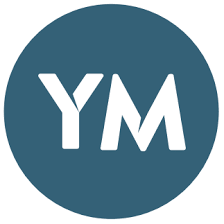Description
One of the most beautiful features of digital fabrication is the way it allows us to salvage the past. Our reality may be the life's work of millions of brilliant people, but often, time and technology relegate their astonishingly functional artifacts to mere novelties or footnotes. Sometimes, though, for a low cost and a modest amount of design time, 3D printing enables us to rip their work into the present, to compete with modern day on it's own merits. I only know a small amount about photography, but I am beginning to suspect that the 80 year old lens in the photos above - the *Carl Zeiss Sonnar 50mm 1:1.5* - is one of these objects worth reviving. The lens was made in the early 1930's, from robust metal and optically flawless glass in a *Sonnar* arrangement - a designation describing the number and placement of glass elements that focus the light, and also an arrangement known for its sharp-but-painterly image quality, but also an arrangement which has never been replicated on modern DSLR's (due to technical incompatibilities). Unlike modern lenses, however, it was designed to be used on a camera with the focusing mechanism built into the camera body, and not the lens - which means that adapting it to a mirrorless digital camera required expensive and obscure adapters. **Provided here is my first attempt at an elegant, 3D-printable integration between this lens and a modern camera. It cleanly adapts to Sony NEX / E-Mount cameras. It is also a good starting point towards a more general series of focusing adapters for various lenses, and proof-of-concept towards building 3D printed lenses in their entirety.** It is a single-helicoid focusing mechanism, which means the lens rotates as it focuses. (I have a design for a double-helicoid mechanism, but I think it will be a challenge to print with good results at this point.) The focus range is roughly 30cm to infinity. (Closer than history intended... several of the sample images above would not have been possible with a traditional adapter.) *Credit: I took the photos shown over the weekend with this lens and adapter. They are 70% beautiful because of my gorgeous girlfriend and stylish friends, 25% beautiful because the camera lens is amazing, and 5% beautiful because I was obnoxious enough to be there with a camera and hit the correct button.* **2013.09.15 - v1.12 Update:** *Oh boy, is this ever a sweet update. I've made a bunch of improvements, including:* - *A 3D printer-optimized threadform I developed based on extensive testing of printed helicoid accuracy. The threads now have continuous curvature in the plan view, meaning that jerk in the printhead is minimized while the adapter is being printed*. - *A finer thread pitch and longer focus throw, for closer focusing and easier micro-adjustments.* - *A spring-loaded section of threads which preload the helicoid as well as eliminate the need for a screw to function as a focus range limiter* - *Better light baffling on the inside of the lens mount* - *A better snap-fit for inserting the lens* - *A more precise fit for the E-Mount* What remains to be finished: Dialing in the perfect infinity focus stop. Right now, it focuses slightly past infinity.
Comments
You need to be signed in before commenting.
OregonH20
over 10 years
nhfoley
over 10 years
OregonH20
over 10 years
OregonH20
over 10 years
nhfoley
over 10 years
OregonH20
over 10 years







 Free
Free